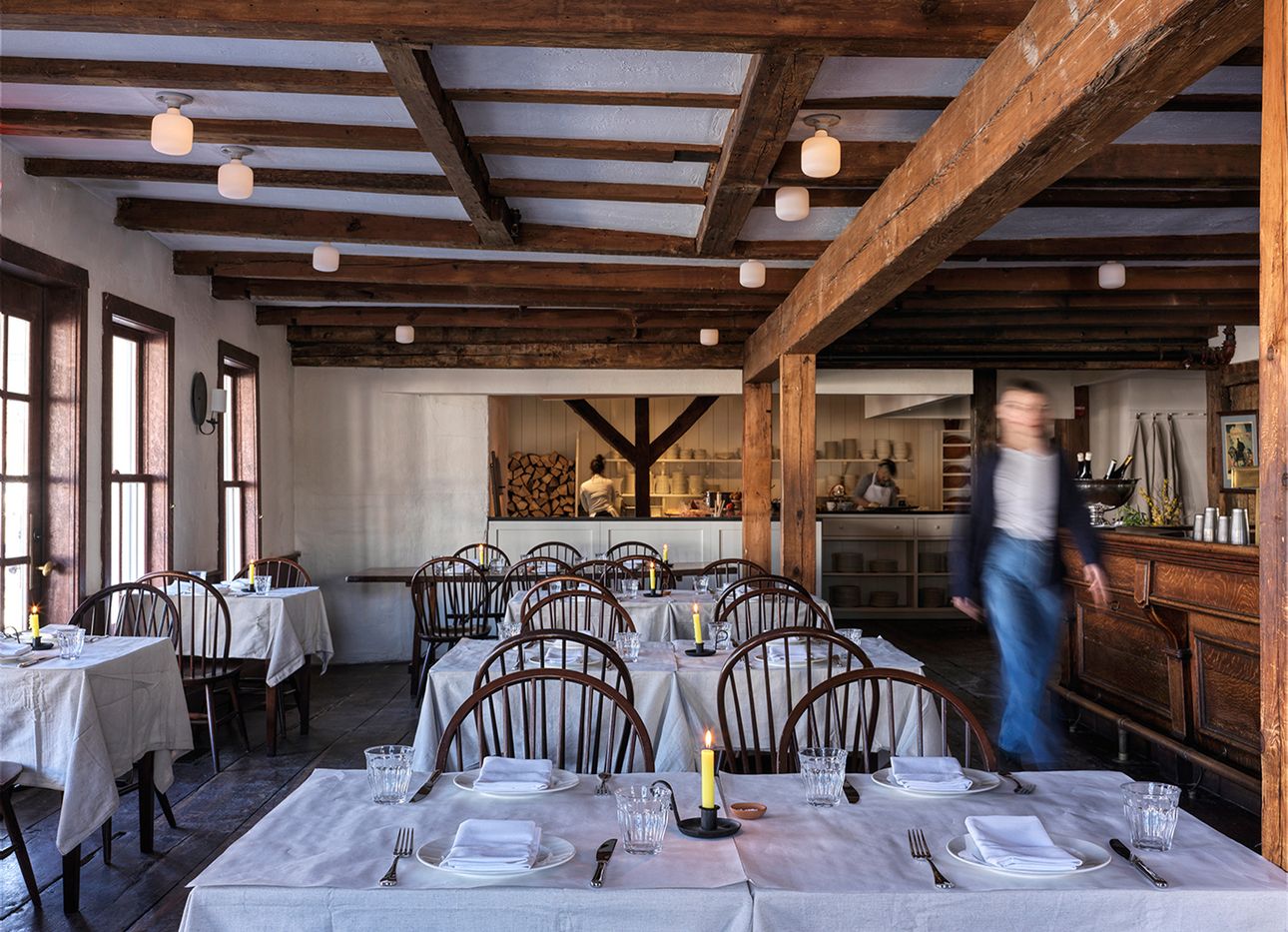
How a Storied Heritage Building Became a Contemporary Community Pub
As chef and co-owner of King, the acclaimed Mediterranean restaurant in New York City’s SoHo neighborhood, Clare de Boer learned how cooking and eating food can make time stand still. “Meals are one of our precious final frontiers,” she says. “People slow down, really look at the person across from them—and even put away their phones—to share the moment.” Now, she’s applying those lessons at her first solo venture, Stissing House, which she opened, with the help of Italian chef Oliviero Borgna and pastry chef Suzanne Nelson, in mid-March in the Hudson Valley town of Pine Plains. The goal for her incarnation of this two-story 1782 farmhouse-style building, which once housed the second-oldest inn in the United States, is not merely to serve food. It’s far beyond that, de Boer says: “It’s to hold time by creating a space that allows people to connect.”
Decamping with her husband and young family to Dutchess County from Brooklyn during the pandemic, de Boer had no plans for professional endeavors upstate. Then came a call asking her to look at the heritage building—named after Stissing Mountain, the town’s most visible landmark—which had suddenly become available for lease.
Wooed by the space’s early 19th-century domed ballroom—one of very few left in the country—as well as its original Dutch-colonial framing and rare, 18th-century hand-hewn timbers, she couldn’t resist. “The whole place heaves with the spirit of good times,” de Boer says. “There’s three fireplaces in the dining room, two in the kitchen, floorboards that are thirty-eight inches wide, and not one straight beam in the building. It’s one of a kind.”
Once the place was hers, she began by researching Stissing House’s considerable history—as an inn, tavern, restaurant, and bawdy house from the times of George Washington to Franklin D. Roosevelt, both of whom came to Stissing House to bolster their political careers. De Boer also welcomed input from locals eager to share memories of bar brawls, and even of a wrought-iron bed, complete with handcuffs. One former owner lugged over a garbage bag of old accounting ledgers, doctor’s notes, love letters, and guests’ doodles found on site. Many of these artifacts now decorate the space’s interior walls, each of which de Boer stripped, then plastered and lime-washed—a process similar to the one utilized when Stissing House was first built.
Rather than feel burdened by its history or the restrictions on renovating a heritage structure, de Boer delights at Stissing House’s built-in advantages. She calls the open kitchen, with its wood-fire hearth, “a chef’s dream,” and is already making future plans for the 6,000-square-foot interior, which include adding a farm shop and bakery as well as hosting feasts and fetes in the domed ballroom. For now, the main restaurant seats up to 50, and there’s a second story for private events, plus a two-acre garden for outdoor dining in the summer.
“I can’t wait,” de Boer says of the upcoming season. “Hopefully everyone will be drinking on the terrace. We’ll be preserving fruits as they peak, then making bite-size jam tarts to show off the fruits for long after.” (She also mentioned a tantalizing summer burger, made with locally sourced beef, a homemade bun, and a thick slice of marinated heirloom tomato.)
Though she dove into Revolutionary-era and Shaker cookbooks for inspiration for the menu—early items included pork shoulder cooked in cider with apples and celeriac, and pheasant roasted in the open hearth with juniper and vermouth—de Boer emphasizes that Stissing House’s meals are no treatise on Shaker history. Instead, she gravitated toward the similarities she found with the country meals her grandmother cooked in Buckinghamshire, England, sourcing ingredients locally, mainly from nearby Fat Apple Farm and Whippoorwill Farm in Salisbury, Connecticut, to create each dish.
De Boer is especially excited about Stissing House’s desserts, each one a veritable time machine, crafted with nostalgia in mind. “The way to my heart is the cherry on top of an ice cream sundae,” she says. “As we walk out of the kitchen to deliver coconut cake topped with a frivolous indulgence of creamy whipped frosting, or a jumbo rhubarb crumble with a giant scoop of vanilla ice cream on top, people’s eyes light up, and they smile like a child.”
Ultimately, despite the grandeur of the historical space and its splendid menu items, de Boer’s vision for Stissing House is anything but precious. “This isn’t a philosophical endeavor,” she says. “It’s a good local pub with honest, easy food where I want everyone to feel welcome.”